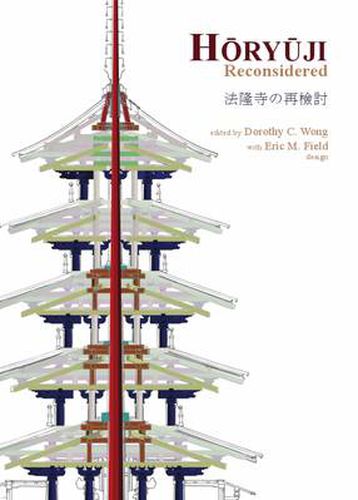Readings Newsletter
Become a Readings Member to make your shopping experience even easier.
Sign in or sign up for free!
You’re not far away from qualifying for FREE standard shipping within Australia
You’ve qualified for FREE standard shipping within Australia
The cart is loading…






Designated a UNESCO World Heritage site in 1993, the Horyuji temple complex includes some of the oldest and largest surviving wooden buildings in the world. The original Horyuji temple was built between 601 and 607 by Prince Regent Shotoku (573?-622), one of Japan’s best-known cultural heroes. The construction of the temple marked the introduction of Buddhism and Buddhist art and architecture to Japan from China, by way of the Korean peninsula, as promoted by Prince Shotoku. After a fire in 670 that destroyed the site, the temple was rebuilt and enlarged. Horyuji became one of Japan’s leading centers of Buddhist scholarship as well as a focus for the cult of its founder, Prince Shotoku. This volume of essays originate from the The Dawn of East Asian International Buddhist Art and Architecture: Horyuji (Temple of the Exalted Law) in Its Contexts symposium held at the University of Virginia in October 2005. Covering the disciplines of archaeology, architecture, architectural history, art history, and religion, these essays aim to shed new light on the Horyuji complex by (1) examining new archaeological materials, (2) incorporating computer analysis of the structural system of the pagoda, and (3) including cross-cultural, interdisciplinary perspectives that reflect current research in various fields.
$9.00 standard shipping within Australia
FREE standard shipping within Australia for orders over $100.00
Express & International shipping calculated at checkout
Designated a UNESCO World Heritage site in 1993, the Horyuji temple complex includes some of the oldest and largest surviving wooden buildings in the world. The original Horyuji temple was built between 601 and 607 by Prince Regent Shotoku (573?-622), one of Japan’s best-known cultural heroes. The construction of the temple marked the introduction of Buddhism and Buddhist art and architecture to Japan from China, by way of the Korean peninsula, as promoted by Prince Shotoku. After a fire in 670 that destroyed the site, the temple was rebuilt and enlarged. Horyuji became one of Japan’s leading centers of Buddhist scholarship as well as a focus for the cult of its founder, Prince Shotoku. This volume of essays originate from the The Dawn of East Asian International Buddhist Art and Architecture: Horyuji (Temple of the Exalted Law) in Its Contexts symposium held at the University of Virginia in October 2005. Covering the disciplines of archaeology, architecture, architectural history, art history, and religion, these essays aim to shed new light on the Horyuji complex by (1) examining new archaeological materials, (2) incorporating computer analysis of the structural system of the pagoda, and (3) including cross-cultural, interdisciplinary perspectives that reflect current research in various fields.